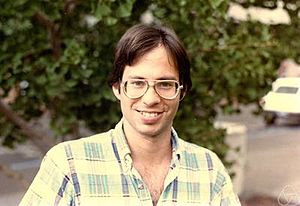Robert F. Coleman facts for kids
Quick facts for kids
Robert F. Coleman
|
|
|---|---|

Robert Coleman at Oberwolfach in 1983
|
|
| Born | November 22, 1954 |
| Died | March 24, 2014 (aged 59) |
| Nationality | American |
| Alma mater | |
| Known for |
|
| Awards |
|
| Scientific career | |
| Fields | Mathematics |
| Institutions | University of California, Berkeley |
| Doctoral advisor | Kenkichi Iwasawa |
Robert Frederick Coleman (born November 22, 1954 – died March 24, 2014) was an American mathematician. He was a professor at the University of California, Berkeley. He made important discoveries in a field of math called number theory.
Contents
Robert Coleman's Life Story
Robert Coleman finished high school at Nova High School. He then went to Harvard University and earned his first degree in 1976. After that, he studied at Cambridge University in England.
His University Studies
While at Cambridge, a professor named John H. Coates gave him an idea for his advanced degree project. Robert Coleman then went to Princeton University. He finished his doctoral degree in 1979. His advisor, who guided his studies, was Kenkichi Iwasawa.
Career and Challenges
After Princeton, he worked for one year at the Institute for Advanced Study. Then, he taught at Harvard University for three years. In 1983, he moved to the University of California, Berkeley.
In 1985, Robert Coleman became very sick with a condition called multiple sclerosis. This illness caused him to lose the use of his legs. Even with this challenge, he kept working as a professor until he retired in 2013. In 1987, he received a special award called a MacArthur fellowship. This award is given to talented people in many different fields.
Robert Coleman passed away on March 24, 2014.
What Robert Coleman Studied
Robert Coleman mostly worked in number theory. This is a branch of Mathematics that studies whole numbers and their properties. He was especially interested in two areas: p-adic analysis and arithmetic geometry.
Key Math Ideas
He created a new way of doing something called "p-adic integration." This was similar to an older math method but used different kinds of numbers. His work helped solve problems about points on curves in math. It also helped prove an important idea called the Manin-Mumford conjecture.
Coleman also used special math spaces called "p-adic Banach spaces" to study "modular forms." These are complex math functions. With another mathematician named Barry Mazur, he helped create something called the "eigencurve." This is a special tool used in advanced number theory.
In 1990, Robert Coleman found a small mistake in a math proof by another mathematician. He was able to fix it. He also worked with José Felipe Voloch to confirm an important part of a theory by Benedict Gross.
See also
 In Spanish: Robert F. Coleman para niños
In Spanish: Robert F. Coleman para niños

